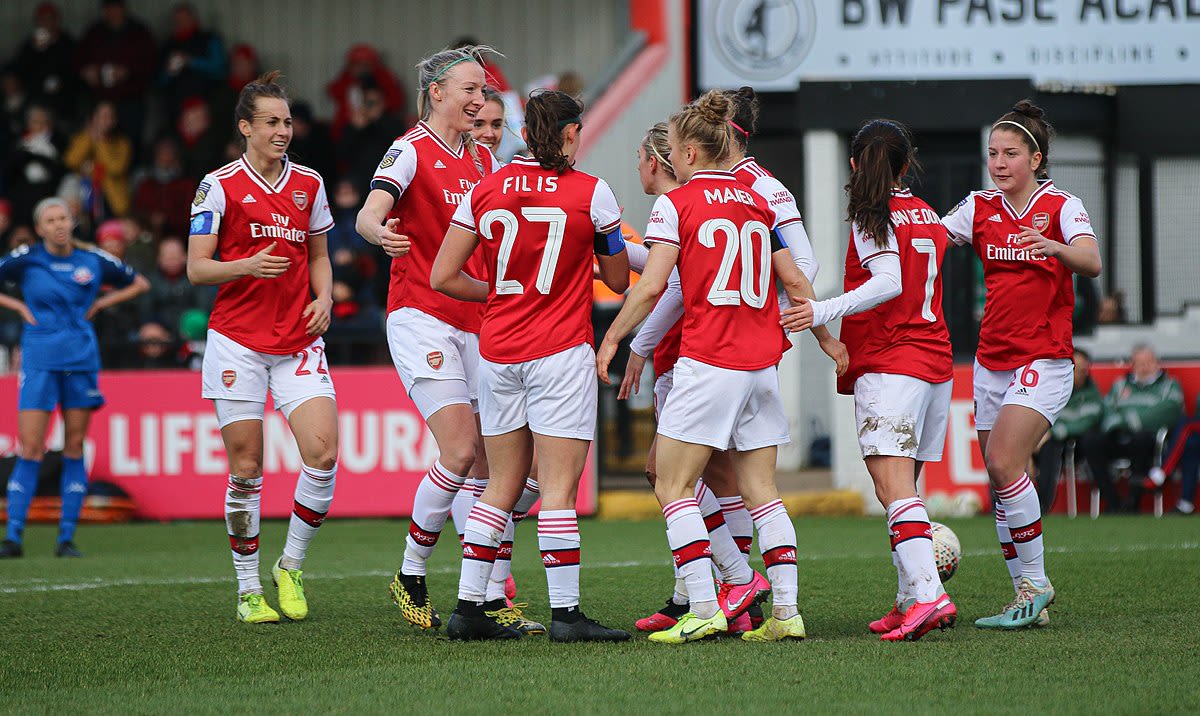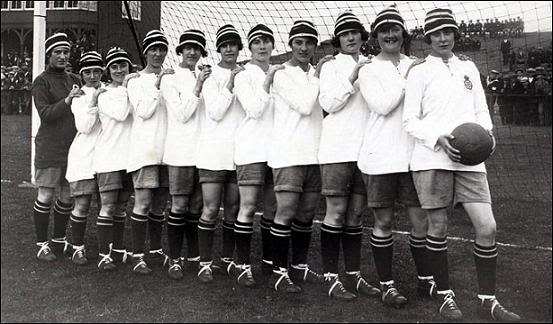FAWSL Broadcast Deal: Is this women’s football’s 'Premier League' moment?
The BBC and Sky's deal to broadcast looks to be a defining moment in throwing the WSL into a wider public spotlight.

‘The game is quite unsuitable for females and ought not to be encouraged’ was the official justification given by the FA when they banned women from playing at football league grounds in 1921. Just a year earlier, in 1920, Dick, Kerr Ladies F. C. had attracted a record crowd of 53,000 for a game at Goodison Park and it is thought that their popularity led to the subsequent ban as the FA viewed them as a threat to the men’s game.
Since 1971, when the ban was lifted, the women’s game has slowly revived itself with substantial progress seen in England ever since Fulham LFC became the first women’s club in Europe to go professional in April 2000. Now the FA Women’s Super League (WSL) have agreed the biggest commercial broadcast agreement in women’s football internationally.

Paving the way to this broadcast deal, women have gained more visibility in football due to an ever increasing number of female pundits. Former footballers such as Alex Scott and Karen Carney have boosted the representation of women on our TV screens along with professional presenters such as Laura Woods and Kelly Cates.
Scott was the first female football pundit at a World Cup in 2018 and just a year later won the Sports Presenter, Commentator or Pundit award from the Royal Television Society for her ‘confident and concise analysis’ of the 2019 Women’s World Cup. These trailblazers have not only provided role models for women aspiring to involvement in the game but have also proven, not that it ever needed to be, that women are more than at home in the country’s most popular sport.
The £24 million deal is small compared to the over £300 million agreement in 1992 when the newly founded Premier League got behind a subscription based model, even without considering inflation. However it still becomes the greatest commercial broadcast agreement in women’s football, and could be just as monumental.

Image: Wikimedia Commons / El Loko
Image: Wikimedia Commons / El Loko
Whilst 75% of the investment reaches WSL clubs, the other 25% reaching women clubs in the Championship, the visibility of the game will increase the grassroot movement. Rumoured to be using the scheduled times brought in for the men's premier league viewing post-pandemic, including Saturday at 11:30 and Sunday at 12:30, domestic Women’s club football is now in the spotlight, now comparable in British broadcasting terms to the Women’s World Cup every four years.
66 games are to be shown live, with one on the free-to-view BBC every weekend. The ability to now show the game on a more accessible platform, unlike the unreliable FA player, means the WSL will reach a new, younger audience, with the ability to inspire the next generation.
Whilst previous schemes to inspire women in sport have had their merits, the stigma remains that football is still a “men’s sport”. In just 2015 the official England twitter posted a tweet saying England women’s team ‘can go back to being mothers, partners and daughters’, after the Women’s World Cup in which England came 3rd, a feat the men's team has not reached since the historic 1966 World Cup. Whilst the men's game remains the most watched sport in the world presently, it doesn’t mean the two cannot grow and co-exist at the same time.
The visibility that this deal affords to the women’s game provides girls in the playground representation that means they can have role models akin to themselves. It isn’t just for those who aspire to be footballers as it also allows increased representation for those who may want to go into the management side, or refereeing. Thanks to the newly widely available broadcasting rights, involvement in football will no longer be a pipedream for women but a tangible aspiration.
When they get there, the quality will be much improved as well. Increased funding allows for the improvement of training facilities and investment into the women’s game that will see it able to move away from a financial reliance upon the men’s. An ability for women to train full time and for the WSL to attract top international talents will also see the calibre of the game improve.
All in all this new broadcast deal represents an opportunity relative to that which was offered by the formation of the Premier League in 1992. Whilst not on the same level financially, the respective potential for transformation this presents to the women’s game should not be overlooked. Now is the moment for the WSL to inspire the next generation of fans and aspiring footballers alike to reclaim the levels of support for the women’s game achieved by Dick, Kerr Ladies back in 1920.

